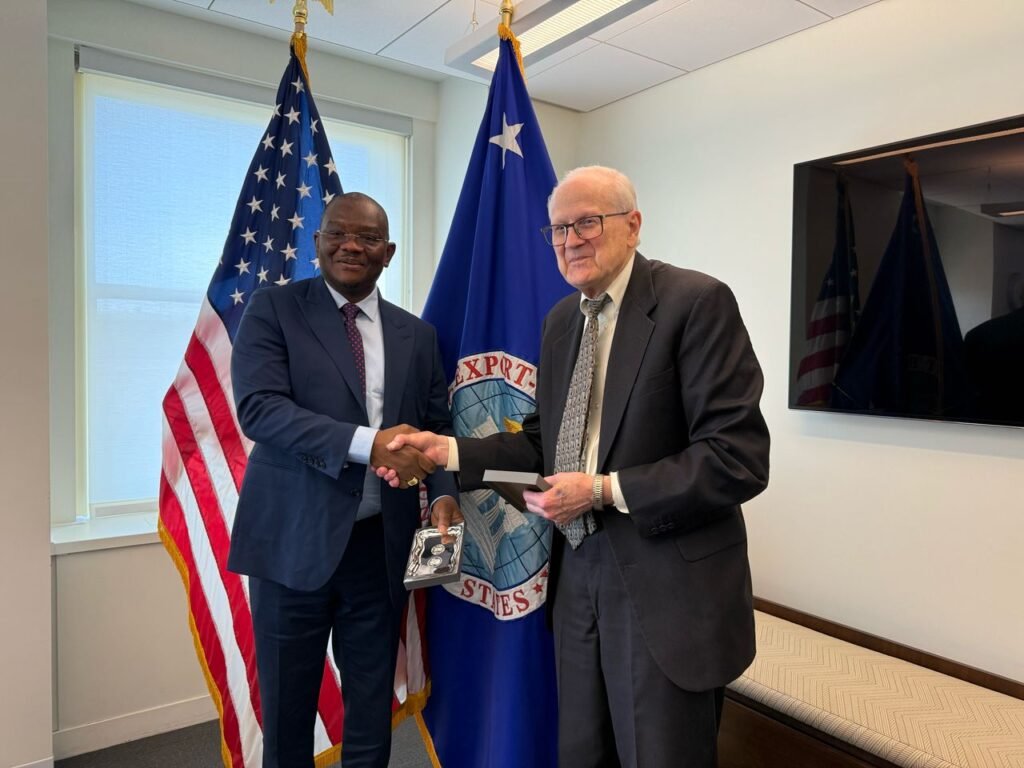Hot!
Temper justice with mercy …European Town squatters appeal to STMA

● Inset: Mr Ansah in an interview with journalist
The occupants of illegal structures along the rail line at European Town, Sekondi, in the Western Region, have pleaded with city authorities to “temper justice with mercy” and give them time to prepare and leave the pleace.

Last week, Sekondi-Takoradi Metropolitan Assembly (STMA), in media notice announced it would demolish the illegal structures dotted along the rail line, near the train station, but, there was ‘no show.’
A source explained to The Spectator that, in accordance with the Assembly’s Bye laws, they should have given the occupants two weeks before commencing the exercise, adding” we’ll be back next week.”
The worried occupants, however, complained about the timing and appealed to the authorities to sympathise with them and extend the period for the exercise.
“We are ready to leave but the timing is too short, we know we need development, however, they should give us up to Christmas or January, by which time we would have got a place to relocate. That’s our plea,” Johannes Ansah, an opinion leader told The Spectator.
He said, a chief at the Sekondi Palace was trying to help them find a place to relocate and so needed more time to put their belongings in order before leaving the area.
STMA, Mr Ansah said, should bear with the occupants who, he noted, were ‘going through hell especially in this economic recession.”
“It’s not easy at all to cope with this unfortunate situation we find ourselves. People are trying to make ends meet and then you come and say clear-off like that, we are self-employed and decent people and it’s not easy to rent a house,” he added.
Mr Ansah claimed that STMA collected temporary business operating permit from businesses in the area and also they paid bills to utility companies.
The opinion leader said that prior to the notice for demolition, ECG had removed about 500 meters from the area thereby grounding the fridges used by fishermen and fishmongers to store fish for sale.
European Town, he argued, hosted Regional Coordinating Council (RCC), home of Paa Grant, Western Naval Command, and attracted fishermen from Kpone, Accra and Winneba areas including barbers, hair dressers, and, therefore, “was a huge commercial hub of Sekondi.”
The fishermen, for example, he complained, had no money to rent rooms in Sekondi for their work, so they needed the temporary structures to lay their heads.
He spoke about the smoking of Indian hemp and other criminal activities such as prostitution, and said the security agencies should deal with such matters.
One woman also accused the indigenes of encouraging the illicit trade in the area.
“The Ashawoo is done by Ghanaians: the foreigners couldn’t have been here without involvement of Ghanaians. We have lived here for almost 30 years and some of us have contracted loans for fishing business, how do we pay the monies back?” distraught woman, Essaba complained.
She told The Spectator she paid GHc600 a year to rent a structure.
FROM CLEMENT ADZEI BOYE, SEKONDI
Hot!
GEXIM deepens relations with US EXIM Bank

A management team of the Ghana Export – Import Bank (GEXIM) led by the Acting Chief Executive, Sylvester Mensah met with the leadership of the Export–Import Bank of the United States (US EXIM) on Wednesday April 23, 2025 in Washington DC, United States of America.
The Acting President and Chairman of US EXIM, Mr. James C. Cruse and Vice President, International Relations, Ms. Isabel Galdiz received the GEXIM delegation, which included Deputy CEO for Banking, Mr. Moses Klu Mensah and Head of International Cooperation, Mr. Jonathan Christopher Koney at the headquarters of US EXIM.

The meeting offered the GEXIM team the opportunity to share the strategic direction of the Bank in line with the resetting agenda of the President of the Republic, His Excellency John Dramani Mahama for the repositioning of the Ghanaian economy into an export-led one by providing the requisite investment to Ghanaian businesses.
Mr. James C. Cruse expressed US EXIM’s eagerness to deepen its existing relations with GEXIM and proposed the signing of a new Cooperative Framework Agreement following the expiration of a Memorandum of Understanding signed in 2019 to utilize US EXIM’s medium term loan guarantees to procure machinery by GEXIM for qualified Ghanaian Small and Medium-sized Enterprises (SMEs).
Mr.Sylvester Mensah thanked the Acting President and Chairman of US EXIM for hosting the GEXIM delegation and reaffirmed the Ghanaian government’s commitment to strengthening trade and investment between Ghana and its global partners for economic transformation of Ghana with GEXIM playing a pivotal role.
The two teams will be meeting on the sidelines of the 2025 US EXIM Annual Conference on 29th and April 30, 2025 to explore possible areas of collaboration and matching Ghanaian businesses to American companies. The meeting ended with an exchange of gifts.
Hot!
Many SOEs have been used as mere instruments for personal wealth accumulation –Pres.Mahama

President John Dramani Mahama has expressed concern over the misuse of State-Owned Enterprises (SOEs) for personal financial gain by individuals in leadership positions.
Speaking during a meeting with Chief Executives of specified entities under the State Interest and Governance Authority (SIGA) on Thursday, March 13, the President directly attributed the dire state of SOEs to their leadership, accusing chief executives, management teams, and governing boards of prioritising personal enrichment over organisational efficiency.
He pointed to bloated budgets, unjustified allowances, and unnecessary expenditures as factors draining public funds while SOEs continue to rely on government bailouts.
“Many SOEs have been used as mere instruments for personal wealth accumulation by appointees. The chief executives, management, and boards of these enterprises are responsible for this situation. Some SOEs have become perennial loss-makers, draining public funds with bloated budgets, unjustified allowances, and unnecessary expenditures while relying on government bailouts as if entitled to them. Many of these entities are at their lowest point in the entire history of the Fourth Republic,” he said.
President Mahama further noted that many SOEs have been plagued by inefficiencies, corruption, and mismanagement, leading to consistent financial losses. He cited the 2023 State Ownership Report by the State Interests and Governance Authority (SIGA), which highlighted systemic inefficiencies and wasteful expenditures within these entities.
He therefore reaffirmed his commitment to reforming under-performing SOEs and ensuring they serve national interests.
He warned that loss-making SOEs will no longer be tolerated and will either be merged, privatised, or closed.
“I will assess you based on your performance. If you do not align with the pace of the reset agenda, you may be asked to step aside. If that adds to the horror movie, so be it,” he added.
Source: Myjoyonline.com







